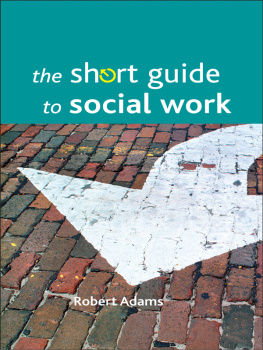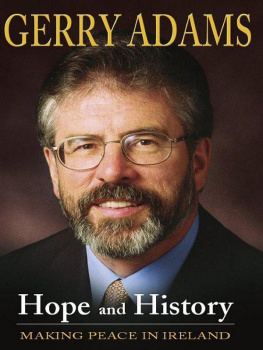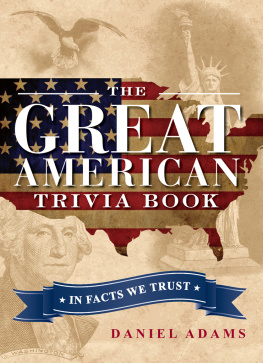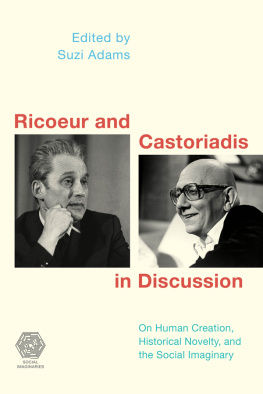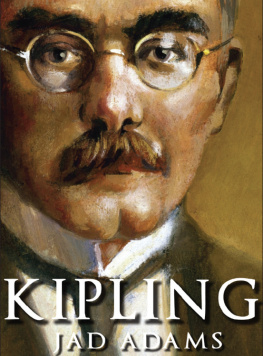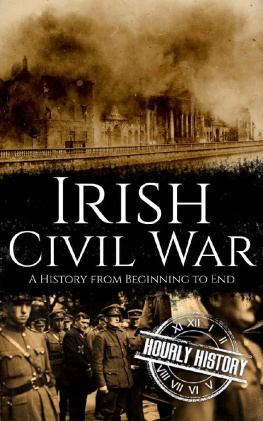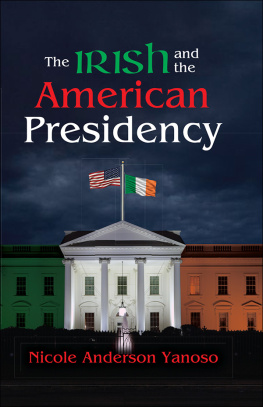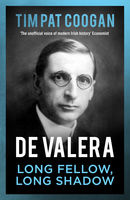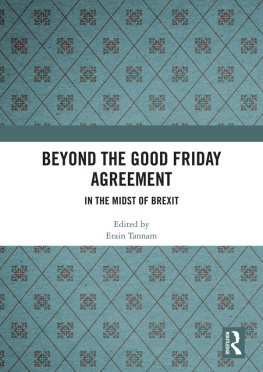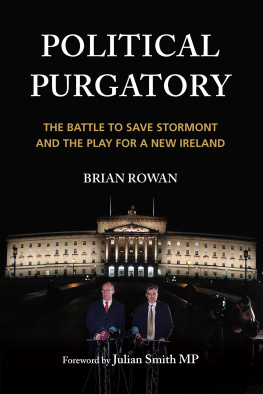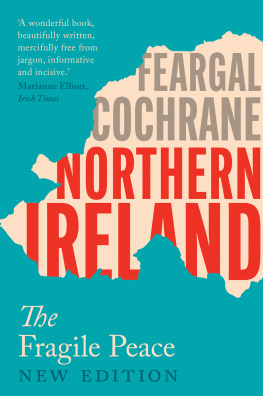
A
FARTHER
SHORE
Irelands Long Road to Peace
Gerry Adams

Contents
| 1. |
| 2. |
| 3. |
| 4. |
| 5. |
| 6. |
| 7. |
| 8. |
| 9. |
| 10. |
| 11. |
| 12. |
| 13. |
| 14. |
| 15. |
| 16. |
| 17. |
| 18. |
| 19. |
| 20. |
| 21. |
| 22. |
| 23. |
| 24. |
| 25. |
| 26. |
| 27. |
| 28. |
| 29. |
| 30. |
| 31. |
| 32. |
| 33. |
Do Drithle le gr.
Chronology of Events
1169
Diarmaid MacMurchadha, King of Leinster, invites Richard FitzGilbert de ClareStrongbowa Norman knight, to Ireland to support him in a local dispute. The conflict which followed was described by native chroniclers as the war of Gael and Gall (Irish and Foreigner).
1601
Spanish forces land at Kinsale in support of Irish. They are defeated.
1607
The Flight of the Earls. Many of the native Irish leaders flee to Europe.
1608
The plantation of Ulster begins. Settlers from England and Scotland arrive in large numbers to become a garrison for the English monarchy.
1649
Oliver Cromwell arrives in Ireland. Ruthlessly puts down a rebellion.
1690
King William of Orange defeats the dethroned English King James II at the Battle of the Boyne.
1695
Penal Laws begin to be introduced. These restrict the rights of Catholics in education, land, the holding of public office, and the ownership of animals. Catholic clergy are banished.
1791
Society of United Irishmen founded.
1795
Orange Order founded.
1798
The United Irishmen rebellion fails. The French Army, which lands to aid the rebels, is defeated.
1800
The Act of Union unites Ireland with the British Parliament.
1803
Rebellion by Robert Emmet.
1829
Catholic emancipation.
1845
The Great Hunger begins and lasts four terrible years. One million die and millions more emigrate in the years following.
1848
Abortive Rising by Young Irelanders.
1858
Irish Republican Brotherhood (Fenian Movement) founded.
1867
Fenian Rebellion fails. Irish Republican Army (IRA) forms.
1879
Land League founded. This was the beginning of a land war to reform land ownership and distribution.
1893
Gaelic League founded.
1905
Sinn Fin founded.
1916
Easter Rising.
1918
Sinn Fin wins 73 out of 105 Irish seats in Westminster. The Sinn Fin Members of Parliament refuse to take their seats.
1919
The First Dil, or Irish Parliament, meets in Dublin. IRA and British Army fight a bitter war.
1920
The Government of Ireland Act partitions Ireland into Southern Ireland, with a devolved parliament in Dublin, and Northern Ireland, with a devolved parliament in Belfast.
1921
Northern Ireland Parliament opened.
1922
The treaty legislating partition narrowly passes the Parliament in Dublin and a civil war commences.
1926
Fianna Fil established.
1942
IRA volunteer Tom Williams hanged in Belfast.
1948
The twenty-six counties are declared a republic.
1956
IRA launches border campaign. It ends six years later.
1964
Divis Street riots in Belfast.
1967
Civil Rights Association established in the north.
1968
First civil rights march takes place in County Tyrone.
The Royal Ulster ConstabularyRUCattack civil rights marchers in Derry.
1969
A number of explosions occur which are initially blamed on the IRA. It subsequently emerges that they are carried out by the unionist paramilitary organization the Ulster Volunteer ForceUVF.
Serious riots in Derry. The unionist government at Stormont asks for the British Army to be put on the streets.
IRA splits.
1970
Sinn Fin splits.
The siege of St. Matthews in the Short Strand in East Belfast and the Falls curfew by the British Army lead to significant support for the IRA.
1971
The war between the British Army and IRA intensifies.
Internment without trial is introduced after demands from the unionist government.
The Ulster Defence Associationthe UDAthe largest unionist paramilitary organization, is founded with the connivance of British Army intelligence.
1972
Fourteen civilians are killed on Bloody Sunday in Derry when the British Army attacks a civil rights march.
Political status is won by republican prisoners.
The first cease-fire between the IRA and British government occurs. It breaks down after two weeks.
Nine people are killed in a series of bomb attacks in Belfast. It is known as Bloody Friday.
1973
Bomb attacks in London.
Power-sharing Executive established.
1974
Power-sharing agreement collapses in the face of a unionist workers strike and mass intimidation and killings.
The Dublin-Monaghan bombs kill thirty-three people. Although the attack is carried out by unionist paramilitaries, British agents are accused of planning and assisting in it.
Feakle talks take place between the IRA and Protestant clergy. These talks and discussions between Sinn Fin representatives and British officials lead to a cease-fire that lasts over a year.
1975
Internment without trial ends.
The British government introduces its Ulsterization, normalization, and criminalization strategy.
1976
Republican political prisoners are denied political status. The H-Block protest in Long Kesh Prison begins.
1977
Widespread allegations of torture against the RUC.
Father Alex Reid and Father Des Wilson establish an arbitration and mediation process between republican factions.
1978
Britain is found guilty of using inhuman and degrading interrogation techniques by the European Court of Human Rights.
Twelve people killed when the IRA bombs the La Mon Hotel outside Belfast.
Blanket protest in the H-Blocks now numbers over five hundred prisoners.
Cardinal Fiaich visits the H-Blocks.
1979
Margaret Thatcher becomes British Prime Minister.
Lord Mountbatten killed in IRA bomb attack. Eighteen British soldiers are killed the same day in a separate attack.
Pope John Paul II visits Ireland.
John Hume becomes leader of the Social Democratic and Labour PartySDLP.
1980
First hunger strike by republican prisoners begins in the H-Blocks of Long Kesh.
Next page

